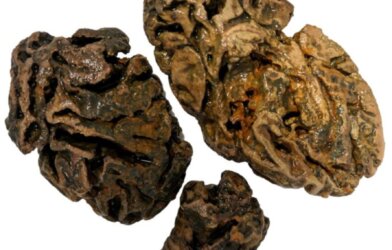Hugs, handshakes, and high fives are all common forms of social interaction. Now scientists want to neurologically explain why. One recent study uncovers a neural pathway in the brain that could hold the answer behind the power of touch.
The team of European researchers demonstrated that stimuli coming from other mice are processed in the brain differently than stimuli from inanimate objects, signifying that the brain regulates each distinctly.
The scientists initially hypothesized that sensory signals carrying information about touch travels from the thalamus to the hypothalamus, which is the center responsible for processing social interaction, without stopping in the cerebral cortex.
To begin testing, the team showed that neurons in a more remote, under-studied area of the thalamus are selectively activated in response to contact. They then increased or decreased neuronal activity using chemogenetic methods and gene transfer. From these experiments, they discovered that thalamic neurons encourage friendly social interactions between rats of the same sex. Moreover, they found that the neurons of the nucleus within the thalamus target the preoptic area, which is the backmost part of the hypothalamus. Additional experiments continued to confirm these results.
After solidifying their findings regarding neural pathways, the team switched gears to focus on neurotransmitters, which also play several vital roles in neuronal activity related to social contact. They conducted this by studying a transmitter called parathormone-like neuropeptide (PTH2), which has been shown to be able to sense same-sex interaction among zebrafish.
In this study, PTH2 levels decreased in thalamic neurons when the mice were separated. More experiments demonstrated that PTH2 activates neurons in the preoptic area in a similar way that neurons from the thalamic nucleus target this same region. When PTH2 was blocked from acting on this area, animals had no interest in physical contact.
“The research showed that tactile stimuli coming from conspecifics are processed in the brain in a different way than stimuli created by inanimate objects. The two pathways separate in the area of the thalamus. The brain mechanisms activated by conspecifics also directly reach the hypothalamic regions responsible for the triggering of behavioral, hormonal and vegetative responses, as well as the feeling of reward,” says Árpád Dobolyi, head of the research at the Department of Physiology and Neurobiology, ELTE Institute of Biology, in a statement.
The scientists are confident that their results offer compelling evidence that may support new therapies for social behavior. They also note that their work brings the field closer to better treating a plethora of mental conditions like depression and anxiety. These conditions may come with an aversion to social contact, so better understanding neural mechanisms can enhance efforts in this realm as well.
This study is published in the journal Current Biology.







-392x250.jpg)



